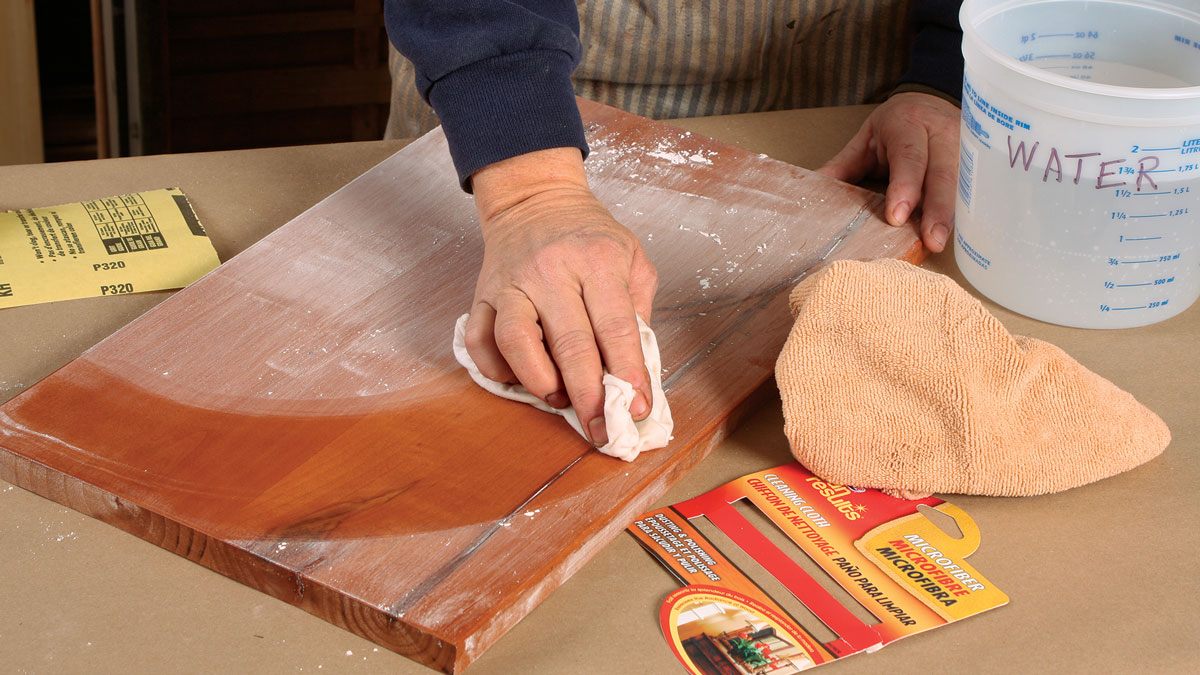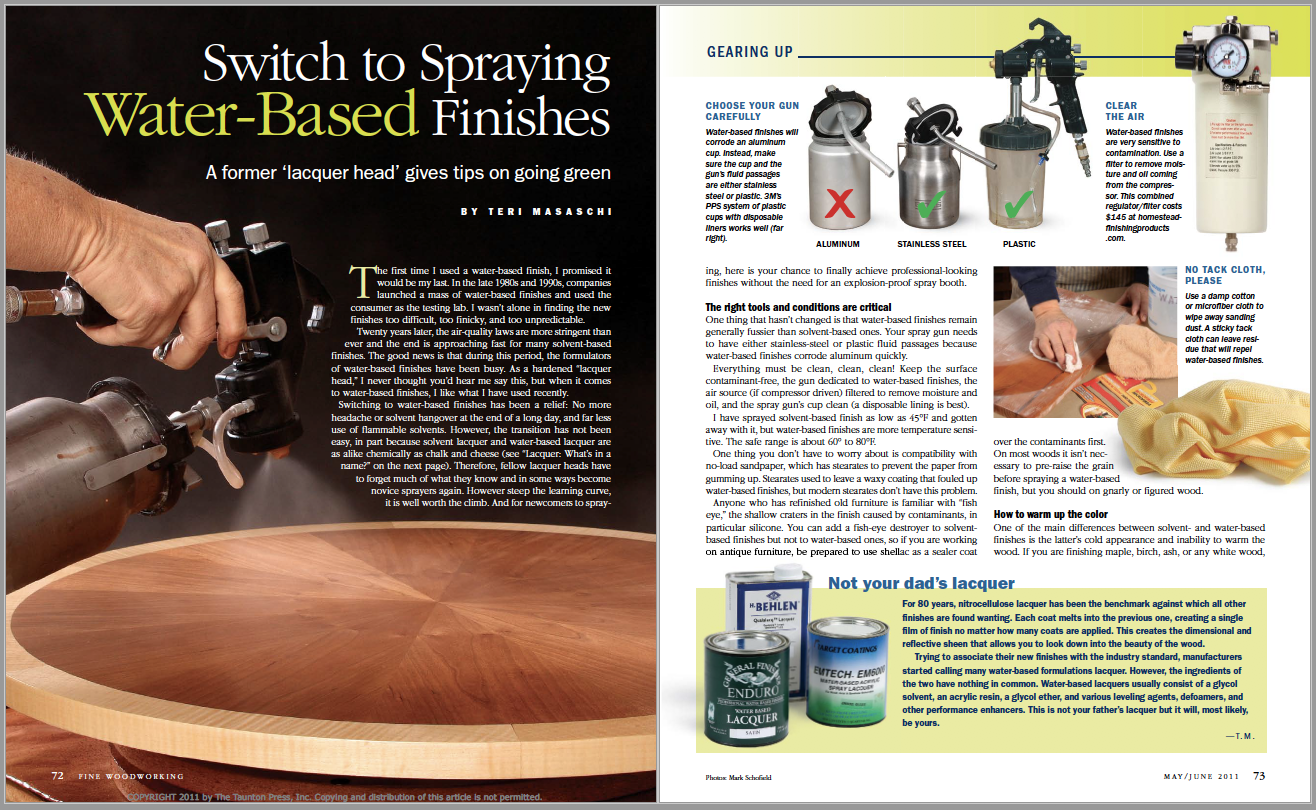Switch to Spraying Water-Based Finishes
A former lacquer head gives tips on going green.

Synopsis: Ready to take your old, well-earned bias against spraying water-based finish and turn it on its head? Professional finisher Teri Masaschi has done a 180° turnaround since she first tried these finishes some 20 years ago. At the time, they were difficult, finicky, and unpredictable, and they couldn’t come close to the quality of solvent-based lacquer. But in the years since, the manufacturers of water-based finish have been busy. Today’s finishes are much better and she likes what she sees. There is a caveat, however: To use them, you have to forget much of what you know and in some ways become a novice sprayer again. Go ahead and do it. The result will be worth it.
The first time I used a water-based finish, I promised it would be my last. In the late 1980s and 1990s, companies launched a mass of water-based finishes and used the consumer as the testing lab. I wasn’t alone in finding the new finishes too difficult, too finicky, and too unpredictable.
Twenty years later, the air-quality laws are more stringent than ever and the end is approaching fast for many solvent-based finishes. The good news is that during this period, the formulators of water-based finishes have been busy. As a hardened “lacquer head,” I never thought you’d hear me say this, but when it comes to water-based finishes, I like what I have used recently.
Switching to water-based finishes has been a relief: No more headache or solvent hangover at the end of a long day, and far less use of flammable solvents. However, the transition has not been easy, in part because solvent lacquer and water-based lacquer are as alike chemically as chalk and cheese (see “Lacquer: What’s in a name?” on the next page). Therefore, fellow lacquer heads have to forget much of what they know and in some ways become novice sprayers again. However steep the learning curve, it is well worth the climb. And for newcomers to spraying, here is your chance to finally achieve professional-looking finishes without the need for an explosion-proof spray booth.

The right tools and conditions are critical One thing that hasn’t changed is that water-based finishes remain generally fussier than solvent-based ones. Your spray gun needs to have either stainless-steel or plastic fluid passages because water-based finishes corrode aluminum quickly.
Everything must be clean, clean, clean! Keep the surface contaminant-free, the gun dedicated to water-based finishes, the air source (if compressor driven) filtered to remove moisture and oil, and the spray gun’s cup clean (a disposable lining is best).
I have sprayed solvent-based finish as low as 45°F and gotten away with it, but water-based finishes are more temperature sensitive. The safe range is about 60° to 80°F.
One thing you don’t have to worry about is compatibility with no-load sandpaper, which has stearates to prevent the paper from gumming up. Stearates used to leave a waxy coating that fouled up water-based finishes, but modern stearates don’t have this problem.
 From Fine Woodworking #219
From Fine Woodworking #219
For the full article, download the PDF below:
Fine Woodworking Recommended Products

Bumblechutes Bee’Nooba Wax

Foam Brushes

Osmo Polyx-Oil








Log in or create an account to post a comment.
Sign up Log in